Unclog Your Toilet: Effective Solutions Without a Plunger
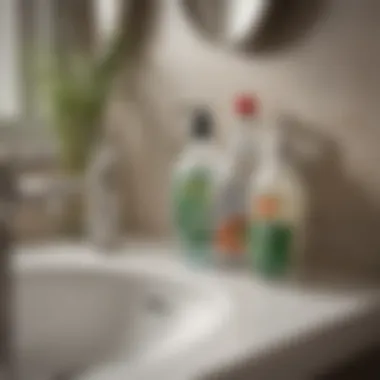
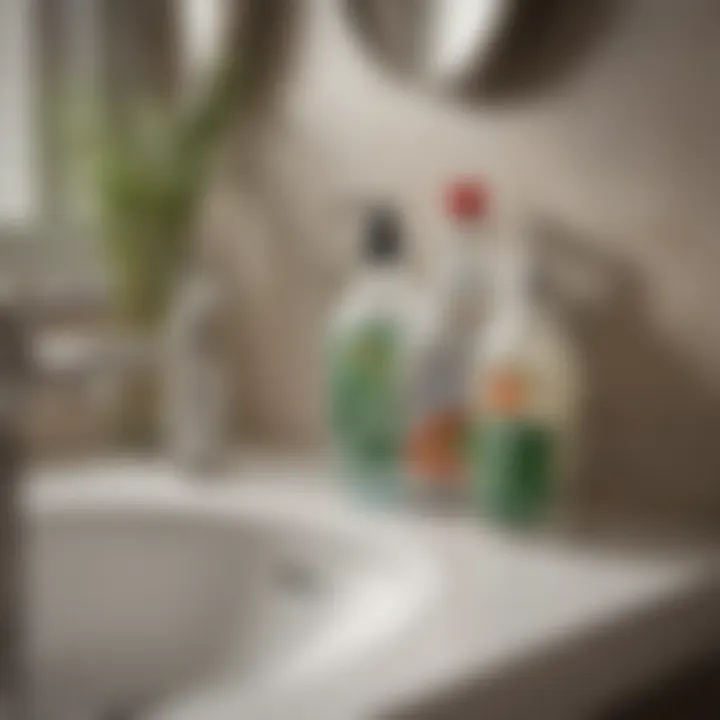
Intro
A clogged toilet can be a frustrating experience. Often, the first tool one might think of is a plunger, but there are various other effective methods to address this common issue. Understanding how to tackle toilet clogs without a plunger can save time and perhaps avoid damage to plumbing systems. In this article, we will explore several alternative techniques, tools, and household items that can be used to effectively unclog a toilet. We'll also look at preventative measures to sidestep future clogs, making this information invaluable for both homeowners and renters.
Methods to Unclog a Toilet Without a Plunger
Hot Water
One of the simplest methods involves using hot water. Start by boiling a kettle of water, then let it cool slightly before pouring it into the toilet bowl. This method works well with clogs caused by toilet paper or other soft materials. Be cautious; if the toilet is made from porcelain, avoid using boiling water directly as it may crack.
Dish Soap
Another effective solution is dish soap. Pour about a cup of dish soap into the toilet bowl and let it sit for about 10-15 minutes. The soap can help lubricate the clog, making it easier to dislodge when combined with hot water. After waiting, follow the soap with hot water to help clear the blockage.
Baking Soda and Vinegar
Using baking soda and vinegar can also be a successful method. Begin by pouring one cup of baking soda into the toilet bowl, followed by one or two cups of vinegar. This combination causes a fizzing reaction, which can help break down the clog. Allow the mixture to sit for at least 30 minutes, then flush.
Wire Hanger
If the clog is stubborn, consider using a wire coat hanger. Unravel the hanger until it is fairly straight, then create a small hook at one end. Gently insert this tool into the toilet bowl to maneuver through the blockage. However, exercise caution to avoid scratching the porcelain.
Wet/Dry Vacuum
A wet/dry vacuum can be particularly useful for larger clogs. Set it to liquid mode, and attempt to create a seal at the toilet opening to suck out the clog. This method often yields effective results, but it is advisable to clean the vacuum thoroughly afterward to avoid sanitary issues.
Preventive Measures
Preventing future clogs is crucial. Here are some tips:
- Limit toilet paper use. Use only what is necessary.
- Avoid flushing unwanted items. Items like hair, wipes, and feminine products should never go down the toilet.
- Regular maintenance. Periodic cleaning can prevent build-up.
"Regular checks and maintenance can save vast amounts of time and hassle when it comes to plumbing issues."
Culmination
Dealing with a clogged toilet does not have to be an ordeal. With some basic household items and methods, homeowners can address the issue effectively without a plunger. Understanding these solutions can facilitate immediate action and promote better toilet health. By practicing preventative measures, one can significantly reduce the likelihood of future clogs.
Prelude to Toilet Clogs
Toilet clogs are more than just a nuisance. They can cause significant disruption in the daily routine of a household. Understanding the nature of these clogs is the first step towards effectively managing them. In this article, we will explore various methods for unclogging a bathroom toilet without needing a plunger. This approach is not just about troubleshooting; it is about preventing future issues and ensuring that your plumbing system functions smoothly.
Understanding Common Causes
A toilet can become clogged for several reasons. Some of the most common causes include:
- Excessive paper usage: Flushing large amounts of toilet paper can lead to blockages.
- Non-flushable items: Items such as wipes, feminine hygiene products, and dental floss can easily obstruct pipes.
- Low water levels: Sometimes, the water in the tank does not reach the proper level, which affects flushing.
- Pipe obstructions: Over time, mineral buildup or tree roots can constrict the flow within pipes.
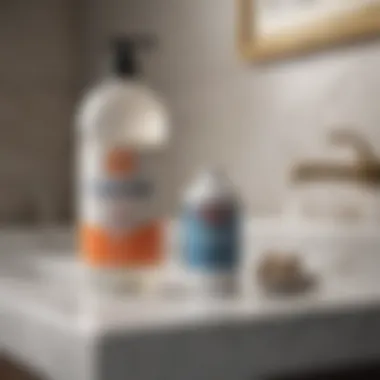
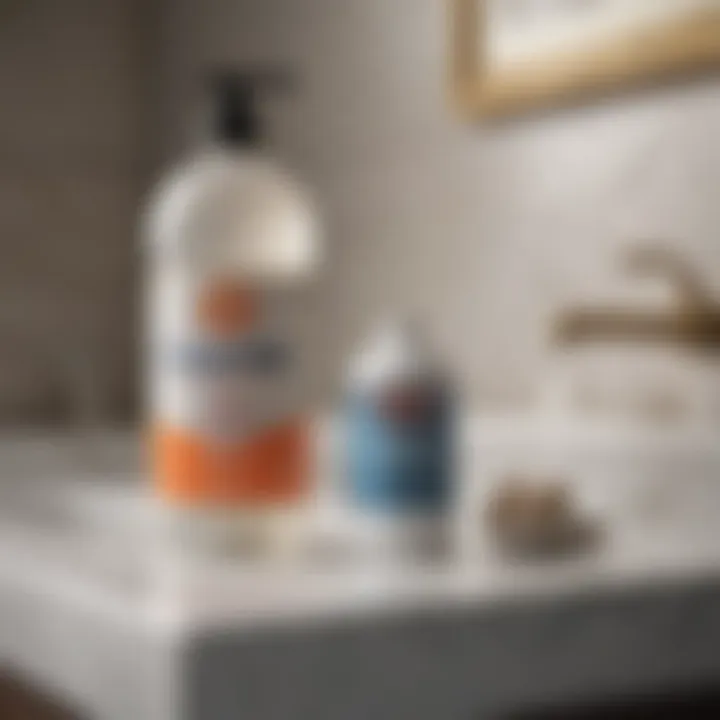
Recognizing these causes can help in diagnosing problems more effectively. Understanding what might lead to a clog enables homeowners to take preventive measures.
Implications of Clogged Toilets
The implications of clogged toilets go beyond simple inconvenience. A clogged toilet often leads to:
- Water damage: Continuing attempts to flush a clogged toilet can result in overflow, damaging floors and walls.
- Health hazards: Waste materials can pose serious health risks if water spills over.
- Increased plumbing bills: Frequent clogs can escalate repairs, leading to significant costs over time.
Addressing toilet clogs swiftly can save both time and money, making it essential for homeowners to be equipped with effective solutions.
Understanding these factors and recognizing the common causes of clogs helps in taking preventive measures. By being proactive, you minimize risks of clogs reoccurring.
Alternative Methods to Unclog
Toilet clogs can be frustrating, particularly when a plunger is not available. Understanding alternative methods to unclog a toilet can prove invaluable. The ability to tackle this issue effectively can save time, reduce stress, and minimize potential damage to your plumbing. Each method discussed here not only provides practical solutions but also addresses the nuances of different clog situations. This enables homeowners to make informed choices based on their unique circumstances.
Using Hot Water
One method that is often overlooked is the application of hot water. This technique is straightforward, requiring only a bucket and boiling water. The primary benefit of using hot water is that it can help dissolve and break down the materials causing the clog. When hot water is poured into the toilet bowl, it raises the temperature of the water inside, allowing blockages made of soap, grease, or waste to soften.
However, it's crucial to be cautious with this method. Boiling water should never be poured directly into a porcelain bowl, as sudden temperature changes can crack it. Instead, let the water cool slightly before using it. If done correctly, this method may allow the clog to clear without needing further intervention.
Employing Baking Soda and Vinegar
Baking soda and vinegar are household staples that serve multiple purposes, including unclogging toilets. When combined, this duo creates a chemical reaction that can help clear blockages. The baking soda acts as a gentle abrasive while the vinegar's acidity helps break down mineral deposits and organic material.
To use this method, first, sprinkle about one cup of baking soda into the toilet bowl. Follow it with one to two cups of vinegar. Allow the mixture to sit for at least 30 minutes. You might hear fizzing sounds as the reaction occurs, indicating that it is working. After the waiting period, flush the toilet to see if the clog has cleared. This approach is not only effective but also environmentally friendly.
Utilizing Dish Soap
Dish soap is another effective tool for unclogging toilets. It works by lubricating the clog, making it easier for water to flow through. This method is particularly useful for minor clogs caused by toilet paper or organic material.
To apply this method, squirt a generous amount of dish soap into the toilet bowl. Let it sit for about 10 to 20 minutes to soften the clog. Following this, pour hot water into the bowl—avoiding boiling water directly to prevent damage. After the hot water is added, flush the toilet to see if the clog has dissipated.
Using simple household items can often resolve what seems like a significant plumbing problem. Understanding these methods promotes more proactive and informed home maintenance.
The Role of Tools in Unclogging
Addressing toilet clogs can be frustrating, but having the right tools at your disposal can make the process more efficient. Understanding the role of tools not only simplifies the unclogging process but also increases your chances of resolving the issue without having to call a professional. Different tools serve specific purposes, making it crucial to choose the right one based on the severity and nature of the clog.
When confronting a clogged toilet, you should evaluate whether common household items will suffice or if a specialized tool is necessary. Proper tools can offer a mechanical advantage, reduce the risk of damage to the plumbing, and enhance your overall effectiveness in resolving the clog.
Using a Toilet Auger
A toilet auger is a specialized tool designed for clearing clogs in toilets. Its construction typically includes a long, flexible cable that extends into the toilet bowl and drain. The business end of the auger is equipped with a corkscrew-like tip that can break up or retrieve debris obstructing the passage. Using a toilet auger is straightforward, but it requires a bit of technique.
- Insert the Auger: Begin by inserting the auger’s tip into the toilet bowl. Make sure it is properly aligned with the drain opening.
- Twist and Push: Turn the handle of the auger while pushing it deeper into the drain. This action allows the auger to either break through the clog or latch onto it, facilitating its removal.
- Withdraw and Inspect: Once you feel resistance lessen, pull the auger back out slowly. Inspect the tip for any debris that may have been causing the blockage. Dispose of anything caught on the auger properly.
Using a toilet auger can often help clear stubborn clogs that other methods cannot reach. However, exercising caution is vital to avoid damaging the toilet's porcelain or the internal plumbing.
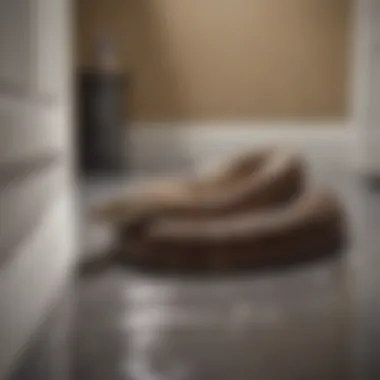
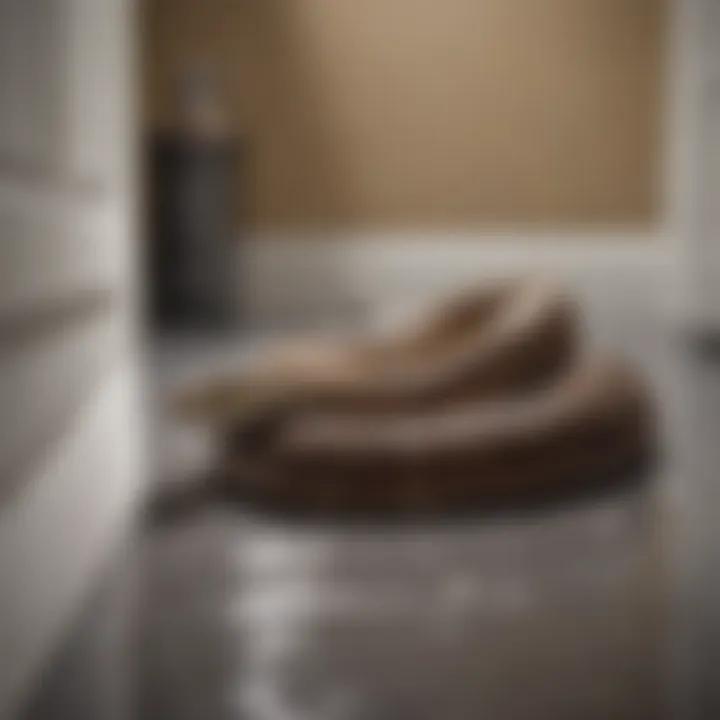
Exploring Natural Drain Cleaners
Natural drain cleaners can be effective alternatives for unclogging toilets without resorting to harsh chemicals. Many household items, such as baking soda, vinegar, and even salt, can be combined to create powerful cleaning solutions. The advantage of these natural cleaners is their eco-friendliness and lower risk of damaging your plumbing.
- Baking Soda and Vinegar: When combined, these ingredients create a fizzing reaction that can help break down minor clogs. Pour a cup of baking soda followed by a cup of vinegar into the toilet bowl. Allow the mixture to sit for about 30 minutes before flushing. This method may remove recent clogs relatively quickly.
- Salt and Hot Water: Another option is to mix salt with hot water. Salt can provide abrasiveness that helps scour the pipes, while hot water helps dissolve buildup. Pour a decent amount of salt into the toilet, then follow it with hot—not boiling—water. Let it sit for a while before flushing.
Natural drain cleaners are not only cost-effective but also safe for regular use as preventive maintenance. They can work well on minor clogs and help keep your plumbing in optimal condition.
Understanding the tools available for unclogging is essential. Whether using a toilet auger or relying on natural drain cleaners, the right approach can lead to effective clog resolution.
Step-by-Step Guide for Each Method
In the quest to unclog a bathroom toilet without a plunger, understanding the specific steps for each method becomes essential. A clear step-by-step guide ensures that readers can effectively address their situation without prior experience or specialized knowledge. Such a guide focuses on transparency and usability, eliminating confusion during the process. By following these outlined methods, individuals can regain functionality in their bathroom facilities swiftly and with minimal hassle.
How to Use Hot Water Safely
Using hot water to unclog a toilet can be an effective method if done correctly. Start by gathering the necessary materials: a large bucket and hot water. It is crucial to ensure the water is hot, but not boiling, as boiling water can crack the ceramic bowl of the toilet.
- Step 1: Heat water in a kettle or a large pot until it is steaming but not bubbling.
- Step 2: Once it reaches the appropriate temperature, carefully pour the hot water into the toilet bowl from waist height. This height creates sufficient pressure to push through the obstruction.
- Step 3: Allow the hot water to sit for a few minutes. The heat helps to break down the blockage, allowing it to dissolve more effectively.
- Step 4: After waiting, check the toilet's flushing ability. If water drains properly, the clog is cleared. If necessary, repeat this process.
Mixing Baking Soda and Vinegar Correctly
Combining baking soda and vinegar presents a dual-action solution that can effectively dissolve clogs through chemical reaction. For optimal results, follow these steps:
- Step 1: Begin with one cup of baking soda. Sprinkle it evenly around the edges of the toilet bowl. This ensures full coverage of the affected area.
- Step 2: Next, pour one cup of white vinegar into the bowl. The reaction between the two will produce fizzing and bubbling, indicating that the mixture is working.
- Step 3: Allow the mixture to sit for at least 30 minutes. This dwell time is essential for the reaction to break down the debris contributing to the clog.
- Step 4: Finally, flush the toilet. Observe if the water drains smoothly. If not, repeat the steps as necessary for stubborn clogs.
Application of Dish Soap
Dish soap is another handy method to unclog a toilet, utilizing its slippery properties to tackle blockages. To apply this method:
- Step 1: Pour about a cup of dish soap into the toilet bowl. Ensure even distribution around the bowl to assist in lubricating any debris causing the clog.
- Step 2: Let the soap sit for around 10-15 minutes. Allowing it to work will facilitate the breakdown of debris due to its ability to penetrate and lubricate.
- Step 3: After waiting, you can follow with hot water. As described in the previous section, pour in hot water from a height. This combination can help wash the loosened debris down the drain.
- Step 4: Monitor the flushing process afterward. Should it still not drain, consider repeating the steps or using an alternative method as outlined earlier.
These detailed steps offer a structured approach to addressing toilet clogs without a plunger, catering to individuals seeking practical and effective solutions.
Understanding When to Call a Professional
Deciding when to enlist the help of a professional to resolve toilet clogs is crucial. Bathroom toilets can become severely clogged due to various reasons. Recognizing the appropriate moment to seek expert assistance can prevent further complications and significant expenses.
Homeowners and renters alike should understand that while many clogs can be effectively managed with home remedies, some situations necessitate the intervention of plumbing professionals. This section highlights what indicators suggest it's time to call an expert and discusses the financial factors that come into play.
Indicators of Severe Clogs
Certain signs indicate that a clog might be too advanced for home remedies. These indicators include:
- Multiple Fixtures Affected: If multiple toilets or drains in your home are experiencing clogs simultaneously, this points to a potentially larger issue within the plumbing system.
- Slow Drainage: If water drains slowly even when there's no visible blockage, it can signify serious problems further down the line.
- Persistent Backup: Continuing to have backups despite trying different unclogging methods can indicate deeper blockages that need professional equipment to resolve.
- Foul Odors: Unpleasant smells around the toilet may suggest issues with sewer lines or sewage venting, which require professional assessment.
It's wise to monitor your plumbing system regularly. Identifying these signs early might save time and money in the long run.
Cost Considerations for Professional Help
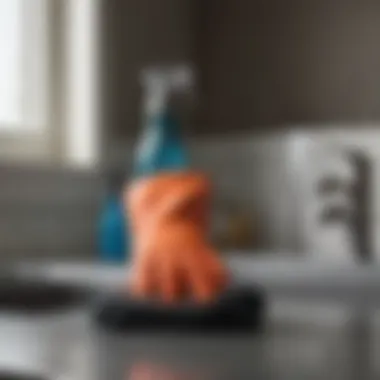
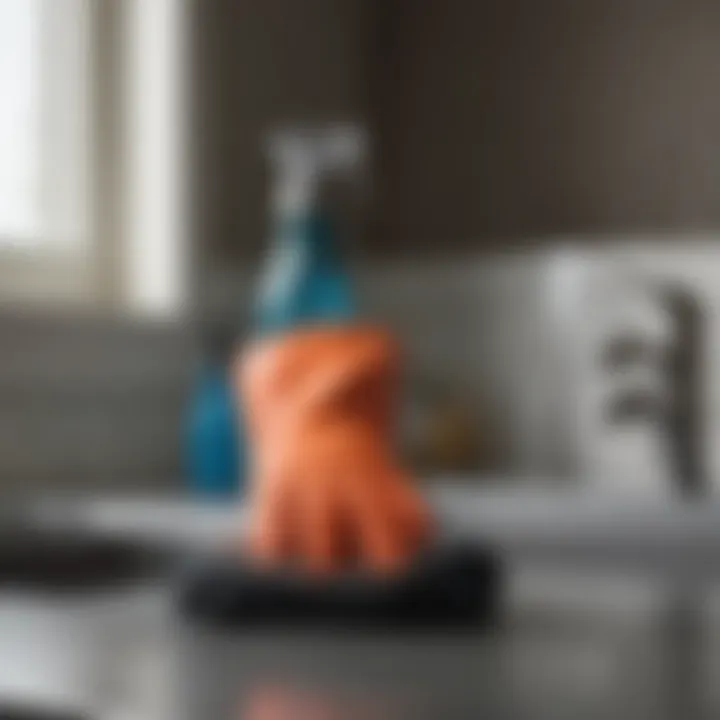
When considering professional plumbing services, understanding the costs involved is vital.
- Service Fees: Most plumbers charge a fee for consultations, regardless of whether they resolve the issue. This fee can vary based on location and the plumber’s experience.
- Scope of Work: The complexity of the clog can affect the total cost. Simple tasks, like standard unclogging, are often less expensive than complicated jobs such as pipe repairs.
- Urgency: Emergency services typically come with a higher price tag. If you require immediate help during off-hours, expect a premium fee.
"Investing in professional help when needed can prevent small plumbing issues from escalating into larger, more costly repairs."
Considering these points carefully will enable homeowners to make informed decisions regarding when to seek professional assistance. Taking action promptly can mitigate potential risks and enhance overall home maintenance.
Preventative Strategies to Avoid Clogs
Preventing clogs is crucial for maintaining a functional and efficient bathroom toilet. Not only does a well-maintained toilet save you from potential inconveniences, but it also minimizes the need for emergency fixes. Being proactive about toilet care can significantly enhance its lifespan and functionality.
Appropriate Items for Disposal
Understanding what can and cannot be flushed is a vital part of preventing clogs. Many homeowners might not realize that certain everyday items can lead to significant plumbing issues. Here are some guidelines to consider:
- Toilet Paper: This is designed to break down in water. Most brands are safe to flush, but excessive use can still create problems.
- Human Waste: This is the primary purpose of the toilet, and it's generally safe.
- Approved Flushable Wipes: Some wipes are labeled as flushable, but information can vary. If the packaging does not specify, it is safer to dispose of them in the trash.
Items to never flush include:
- Paper towels and napkins
- Feminine hygiene products
- Cotton balls and swabs
- Dental floss
- Food scraps
- Medication
By ensuring that only appropriate items are disposed of in the toilet, you can significantly reduce the risk of a clog. Take the time to educate others in your household about these disposal methods, reinforcing good habits.
Routine Maintenance Tips
Regular maintenance of your toilet can prevent many common clogs before they happen. Implementing small but consistent practices is essential. Here are some suggestions:
- Monthly Inspections: Regularly check for signs of leaks, loose fittings, or any issues that might affect performance.
- Routine Cleaning: Use a toilet cleaner bi-weekly to remove build-up in the bowl and flush components. Pay attention to stains that may indicate mineral buildup.
- Check Water Levels: Ensure that the water level in the tank is appropriate. Too high or too low can affect the flushing power.
- Use Mild Chemical Cleaners: Avoid heavy-duty drain cleaners as they can damage pipes. Instead, use enzyme-based products that are gentle and effective.
- Encourage Children and Guests to Be Aware: If you have children or visitors, remind them what should not be flushed.
By incorporating these simple tips into your cleaning routine, you create a strong foundation for preventing clogs.
Remember, consistent care helps extend the life of your plumbing system.
Ending
Understanding how to effectively manage toilet clogs without a plunger is essential for homeowners and renters alike. In this article, we have delved into various methodologies that offer practical solutions when encountering such frustrating situations. Key elements of success include knowing the different causes of clogs, being equipped with alternative unclogging methods, and performing regular maintenance to prevent future issues.
Recap of Effective Methods
When it comes to unclogging toilets, various techniques can be employed:
- Hot Water: Pouring hot water into the toilet can help dissolve some blockages.
- Baking Soda and Vinegar: This powerful combination creates a chemical reaction that can clear stubborn clogs.
- Dish Soap: This slippery substance helps lubricate the clog, allowing it to be pushed through.
- Toilet Auger: A handy tool that can reach deeper clogs efficiently.
- Natural Drain Cleaners: Utilizing environmentally friendly solutions can provide relief without harmful chemicals.
Each method serves a unique purpose and can be chosen based on the severity and nature of the clog.
Final Thoughts on Toilet Maintenance
Regular toilet maintenance can dramatically reduce the likelihood of clogs. Simple practices such as:
- Disposing of appropriate items only
- Avoiding flushing non-biodegradable products
- Scheduling periodic cleaning
These strategies can enhance the toilet's functionality and avoid the stress of bathroom emergencies. A proactive approach ensures that toilets remain in optimal condition.
In summary, being informed about the effective methods to unclog a toilet empowers individuals to handle the situation themselves. It reinforces the understanding that with proper knowledge and practice, one can maintain a functional bathroom environment. For more information on maintenance, feel free to check out resources on Wikipedia and Reddit.















